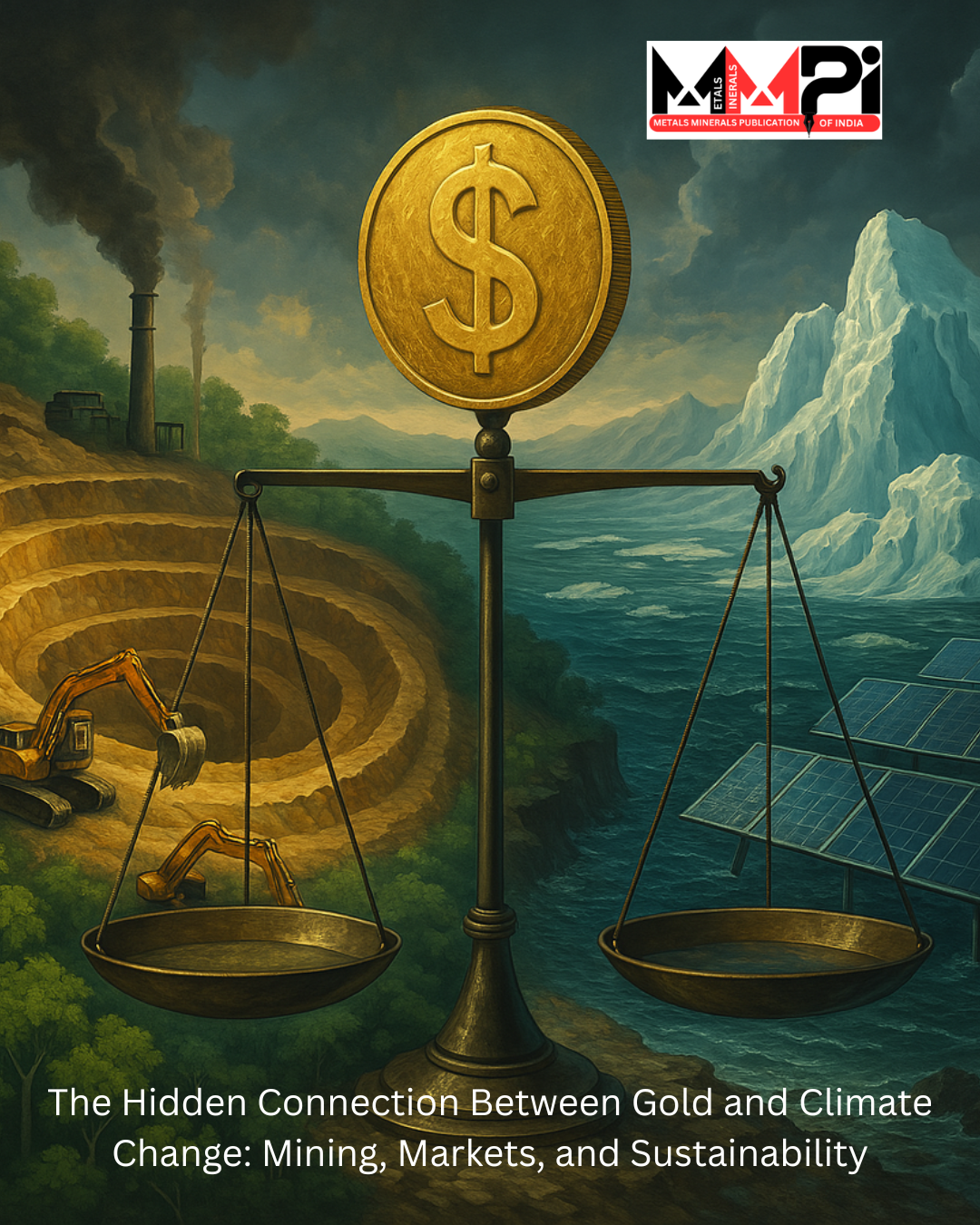Gold has been a symbol of wealth, power, and security for thousands of years. It plays a vital role in everything from global finance to jewelry, electronics, and even space technology. But behind its gleam lies a more complex story—one that intertwines deeply with climate change. While gold itself doesn’t emit greenhouse gases, the ways we extract, process, and consume it can have profound environmental consequences. At the same time, gold plays a strategic role in how societies respond to climate-related economic risks.
This article explores the multi-layered relationship between gold and climate change, touching on environmental, economic, and technological dimensions.
-
Gold Mining and Environmental Degradation
Gold mining is one of the most environmentally disruptive extractive industries in the world. The process of extracting just one ounce of gold can generate 20 tons of waste. The following are the key environmental impacts:
a. Carbon Emissions
Gold mining is highly energy-intensive, especially in large-scale industrial operations. Heavy machinery, explosives, and ore processing require vast amounts of energy, often derived from fossil fuels, contributing to greenhouse gas emissions and accelerating global warming.
b. Deforestation and Habitat Loss
Gold mining, particularly artisanal and illegal operations, is responsible for widespread deforestation, especially in regions like the Amazon Rainforest. Removing trees not only disrupts ecosystems but also reduces the Earth’s capacity to absorb carbon dioxide, a key contributor to climate change.
c. Water Pollution and Toxic Waste
The use of cyanide and mercury in gold extraction can contaminate rivers and groundwater, harming aquatic life and disrupting ecosystems that help regulate local climates. Waste materials from mining often contain acidic substances and heavy metals, which further degrade land and water systems.
-
Gold as a Financial Hedge in Climate Uncertainty
As the world faces increasing climate-related financial risks, gold is emerging as a favored safe-haven asset.
Natural disasters, droughts, and geopolitical instability—all exacerbated by climate change—can destabilize stock markets and currencies. In uncertain times, investors traditionally turn to gold as a store of value, pushing up demand and prices.
Gold’s stability during economic turbulence makes it a potential hedge against climate-driven economic shocks, including insurance crises, agriculture failures, or energy supply disruptions.
-
The Rise of Sustainable and Ethical Gold
In response to climate and environmental concerns, there’s growing interest in sustainable or “green” gold. This includes:
Fairmined Gold: Certified programs that ensure gold is mined with reduced environmental impact, ethical labor practices, and community development benefits.
Recycled Gold: Reducing the need for new mining by reprocessing existing gold from electronics, jewelry, and scrap.
Renewable-Powered Mining: Some mining companies are transitioning to solar, wind, or hydro energy to lower their carbon footprint.
Investors and consumers alike are pushing for transparency in supply chains, demanding gold that aligns with climate and ethical standards.
-
Gold in Clean and Green Technologies
While not as heavily used as metals like lithium or cobalt, gold plays a role in green innovation.
Electronics and solar panels: Gold’s conductivity and resistance to corrosion make it ideal for high-efficiency electrical connectors in renewable energy systems.
Hydrogen fuel cells: Some next-gen fuel cells and clean hydrogen technologies use gold-coated components to improve efficiency.
This emerging role may position gold as not just a climate problem—but potentially part of the solution.

